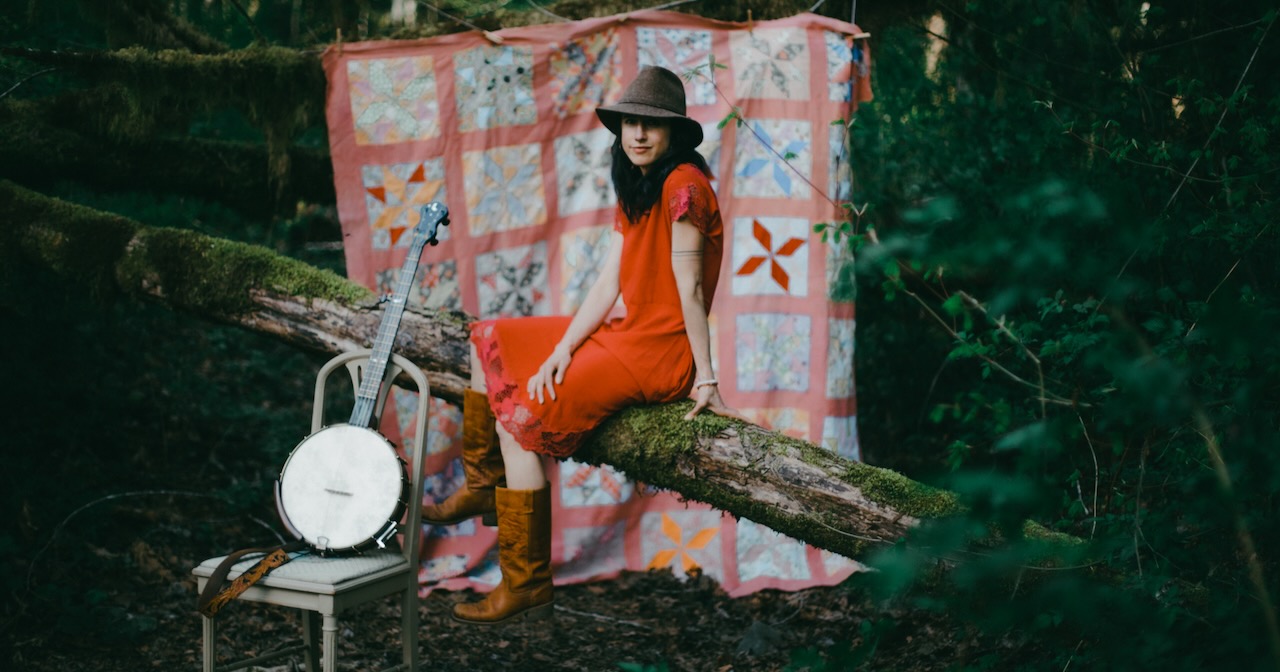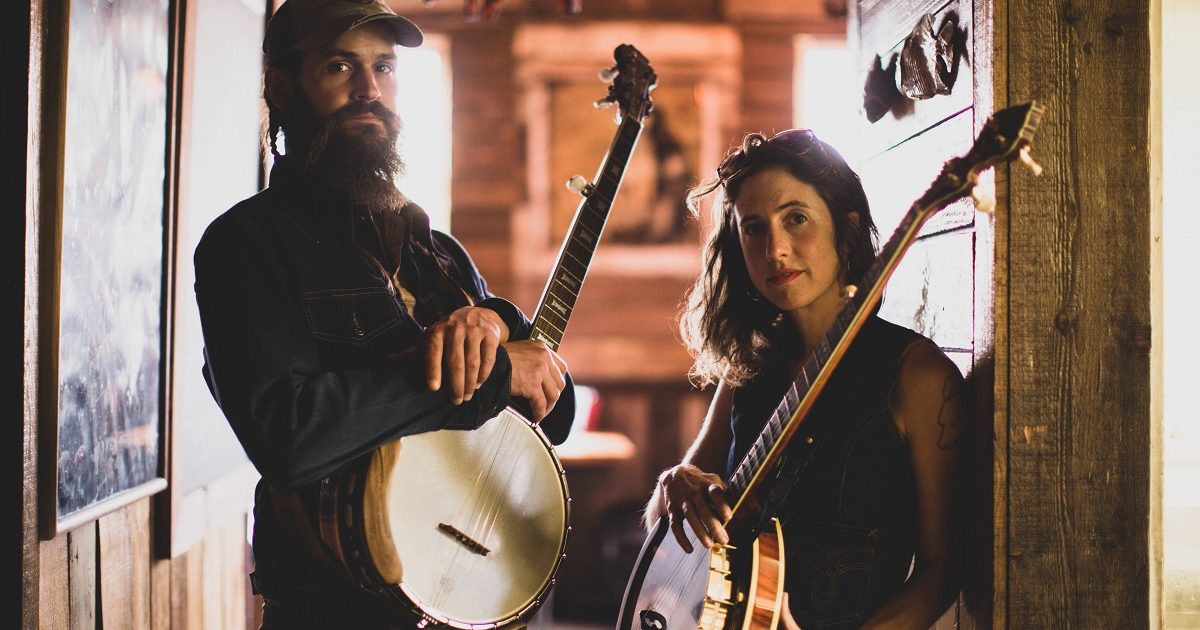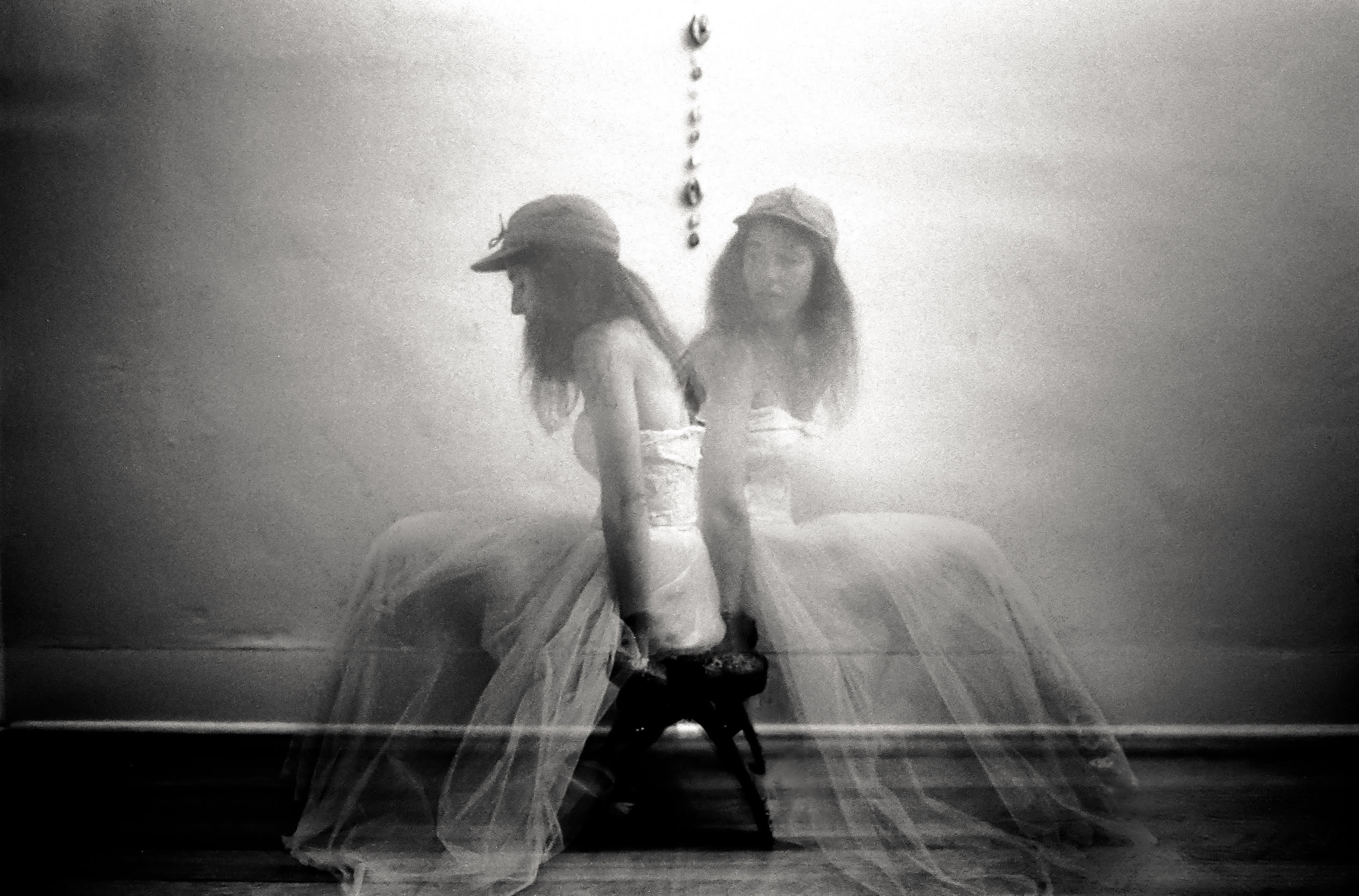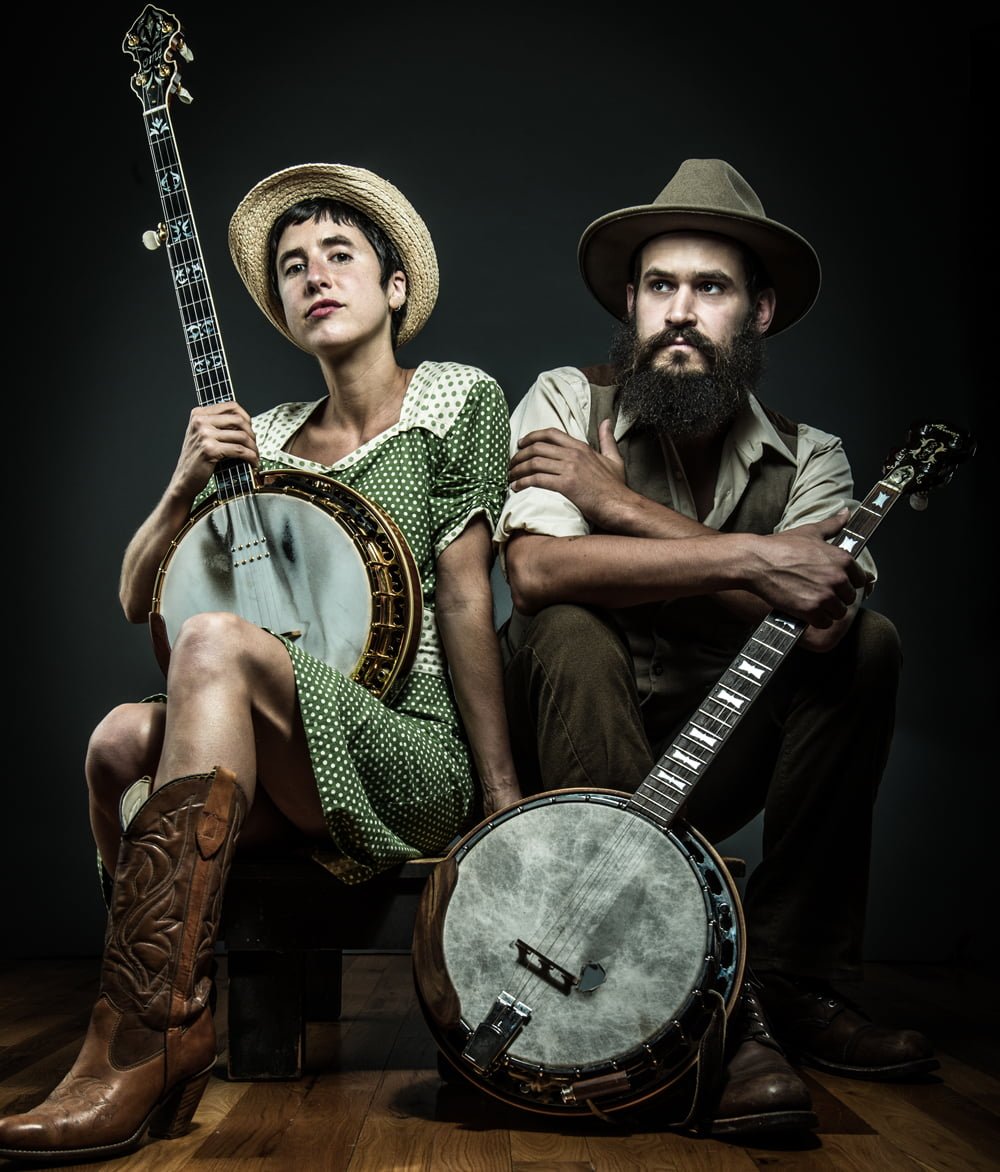Artist: Kendl Winter
Hometown: Olympia, Washington
Latest Album: Banjo Mantras
Personal nicknames (or rejected band names): “Lower half of The Lowest Pair”
What other art forms – literature, film, dance, painting, etc. – inform your music?
I like this question, because I think everything you do, witness, consume, walk by, dance with, or touch informs your (my) music. Most books I’m reading make their way into my lyrics directly or indirectly. I know I’ve quoted or misquoted from E.E. Cummings, Richard Brautigan, Hafiz, Ursula K. Le Guin, Octavia Butler, Rumi, Rebecca Solnit, Thich Nhat Hanh, and probably so many others. All the authors and poets and spiritual leaders I’ve read or listened to and been moved by have woven their ponderings into mine and in turn the tumble of words that spill out onto my morning pages is often informed by those thoughts.
I watch a lot of film and I love movement. I go for long runs in the Northwest – or wherever I currently am – and the landscape informs my music, or the highway does, or the venue. I’m (we) are so porous and regularly trying to make sense of the cocktail of experience I’ve been sipping on. That said, this is an instrumental record, so for me it’s a new kind of transcription or interpretation of the collage of experiences in my head.
What was the first moment that you knew you wanted to be a musician?
My Hebrew school teacher back in Arkansas said he had a video of me as a 5 year-old singing to a stick of butter. In second grade, I wrote a song about landfills and saving the birds. My folks were both classically trained musicians, one a high school string teacher, and the other a low brass professor, so I had music and the example of disciplined musicians practicing around me all the time. As kids, my sister and I were often crawling through the orchestra pit in the Arkansas Symphony or falling asleep in the balcony.
I loved punk music and dabbled with guitar and drums though high school, although I don’t think I actually knew I wanted to be a musician until my early 20s, when I had just moved to Olympia. In the Little Rock area of Arkansas and in Olympia, Washington there was/is such a vibrant DIY scene for music. Some of my first attempts at performing were in Olympia and I had only written half-songs, so they were very short and with a lot of apologies.
What’s the toughest time you ever had writing a song?
I would say lately has been the toughest time for me, writing lyrics at least. Maybe that’s why I’ve been enjoying the spaciousness of instrumentals for a while with the Banjo Mantras. It’s felt less exacting to let my art be more ethereal and open to interpretation. Something about the last five years has made me feel less sure about what to share, in terms of my own verbal songwriting. I think I’m more self conscious or potentially private and maybe more aware of my voice in a way that makes me feel a bit uncertain of what more can be said from my vantage. Songwriting has always been such a huge piece of how I interpret life, though, and it’s an integral piece of my personal process. So I’m still writing, just having a more difficult time sharing it.
If you had to write a mission statement for your career, what would it be?
If I had to write a mission statement for my career, I guess it would be to let curiosity and interest/passion lead me. My music has never been easy to put in a genre and my voice and songwriting has changed over the years. It’s been great to work in the Lowest Pair, because my bandmate Palmer T. Lee is similar in that his sound is difficult to box in, and that both of us have roots and interest in traditional sounds, but are always curious about expanding upon the subject matter and textures in our duo. The Banjo Mantras are just an expansion of that I think. I love the sound of a solo banjo and wanted to share some of the meanderings I found in various tunings and grooves. But yeah, I think my mission statement would involve personal growth, following curiosity and passion, a focus on heart-centric themes, and a goal for connection.
Which elements of nature do you spend the most time with and how do those impact your work?
I spend at least an hour most days going outside for a run or walk. I live in one of the most beautiful places, the PNW, so a short jaunt from my house and I’m next to the Puget Sound inlet full of kingfishers, seagulls, blue herons, and mergansers depending on the season. Low tides and high tides, I see and hear eagles swooping about and on a rare sunny horizon I can see the Olympic Mountains. The other day, I came home with a sticky pocket full of cottonwood buds for my housemate to make a salve with. The nettles have just begun showing this spring. I go for regular wanderings and collect pictures and sounds and try to make a regular practice of noticing things. Less like a practice, and more like just the way my days are, but I recognize it as an integral part of my centering practice.
Photo Credit: Molley Gillispie



